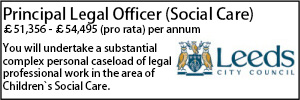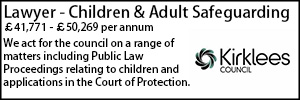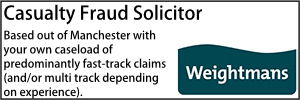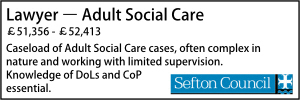The seven questions to address in a welfare analysis
A recent Court of Appeal decision highlights the importance of analysing all the factors in the welfare checklist when considering a care and placement order instead of an overreliance on the ‘risk of harm’ factor, and sets out a 7-step approach to this analysis. Victoria Holland examines the ruling.
- Details
Re T (Children: Risk Assessment) [2025] EWCA Civ 93 involved three children (A1 – 3) for whom final care orders were made in July 2024. The mother was found to have caused a skeletal fracture to A2 in 2016, with no finding as to whether it was deliberate or accidental. The parents allegedly separated, and the children were placed with F under a supervision order which expired in 2017. The children were made subject to child protection plans in 2019 due to concerns over F’s care raised by the school. In August 2019, the children were relocated to Africa to live with the maternal grandmother for four years.
In March 2023, A3 was born. A1 and A2 later returned to England and all three children lived with both parents for five weeks until a health visitor became aware of the previous proceedings. Despite the children being well-presented and the home in good condition, all three children were placed in foster care. A1 and A2 desperately wanted to remain with their parents; the Children’s Guardian ‘described them as the most distressed children she had ever come across in foster care’ [20] and that ‘the family time records are heart breaking to read with A2 and A1 clinging to parents when they are leaving the session [25].’
The judge’s decision to make care orders was premised on the conclusion that the risk of returning the children to their parents’ care outweighed the harms of foster care/adoption. On appeal, the parents submitted there were fatal problems with this reasoning as the judge did not identify the type or degree of risk or consider risk management, including the father’s ability to manage and mitigate risk, or the impact on the children of separation.
The appeal judge set aside the final orders and emphasised the importance of rigorous reasoning and a structured approach to analysis, commenting that ‘the risk of harm, important as it is, is one of a number of factors in the welfare checklist and it has to be carefully assessed, particularly where it may be decisive’ [31].
The Court of Appeal set out the following seven questions which should be addressed when conducting this analysis [33]:
‘(1) What type of harm has arisen and might arise?
(2) How likely is it to arise?
(3) What would be the consequences for the child if it did?
(4) To what extent might the risks be reduced or managed?
(5) What other welfare considerations have to be taken into account?
(6) In consequence, which of the realistic plans best promotes the child’s welfare?
(7) If the preferred plan involves interference with the Article 8 rights of the child or of others, is that necessary and proportionate?’
The benefit of this approach is twofold: ‘A structured analysis of this kind, adapted to the facts of the individual case, is of benefit to those who make decisions and to those who are affected by them. The analysis need not be lengthy, but it ensures that undue weight is not given to one factor, however notable, and that other important factors are not overlooked.’ [34]
Mitigation of the ‘risk of harm’
Re T highlighted that consideration should be given to the Local Authority’s evaluation, if any, of how the risks can be mitigated, as this is often missing from their analysis. This was demonstrated in the recent Court of Appeal case, Re A (A Child) [2025] EWCA Civ 424, in which the first instance judge held: ‘Weighing up all these factors, whilst I accept that there is a risk that [the MGM] might not be able to effective[ly] safeguard P in future years, the local authority have not taken all appropriate steps to evaluate that risk and mitigate it through the avenues described above.’ [95]
In Re A, the Local Authority sought care orders for P instead of placement with the MGM because the MGM’s ex-partner had sexually abused her own children (including P’s mum), so there was a risk of future harm due to safeguarding concerns. However, this risk was vague and unidentified; it was not from the MGM herself and the ex-partner hadn’t been involved with the family for a significant period of time. The first instance judge, whose decision was upheld by the Court of Appeal, accepted this risk but undertook a holistic, well-rounded risk assessment using the welfare checklist and concluded that it did not outweigh the positive care provided by the MGM to P for the majority of the last two years, and held that with the correct support, the MGM could care for P long-term, which was preferable to adoption.
The Local Authority’s submission on appeal that the court needed further evidence that P’s safety would be “secure” with the MGM was rejected by the appeal judge, who corrected this to confirm ‘this is too high a target. The decision is not what outcome will secure P's safety. It is about, I repeat, balancing the relevant factors including the risk of future harm when deciding what orders best meet P's welfare interests.’ [101]
Overall, the appeal judge dismissed the application and criticised the Local Authority’s approach: ‘In summary, the Local Authority has sought to isolate certain factors in support of the appeal. This does not fairly reflect the judge's task which was to balance a number of factors when making her welfare determination. As the judge said, she was “weighing up all these factors”. She did not need to be satisfied that the MGM would keep P safe from harm but whether the risk of harm was such that, effectively, it outweighed all the positive factors in support of P remaining with the MGM and, I repeat, the profound harm she would suffer if removed from the MGM’ [103].
Conclusion
These two cases highlight the importance of conducting a holistic welfare assessment without attaching disproportionate weight to the ‘risk of harm’ factor. The seven-question approach set out by the Court of Appeal in Re T should be adopted to avoid unnecessary separation of families.
Victoria Holland is a second-six pupil barrister at 3PB.
































